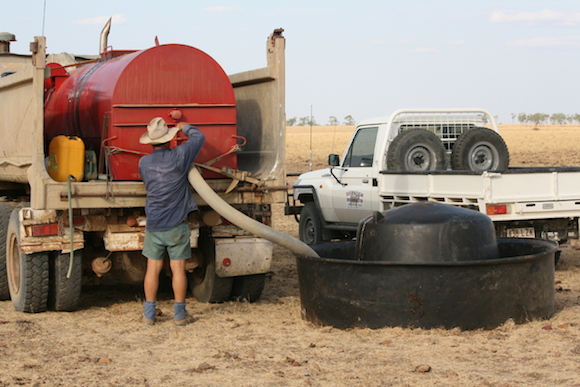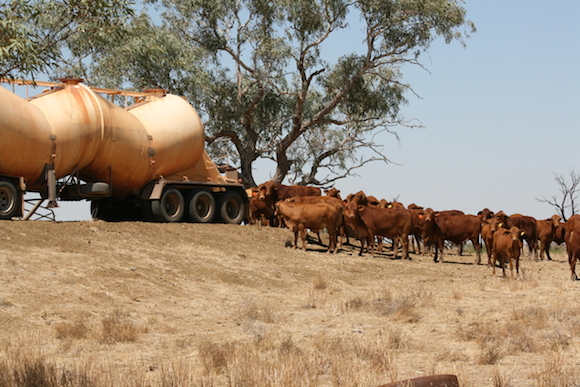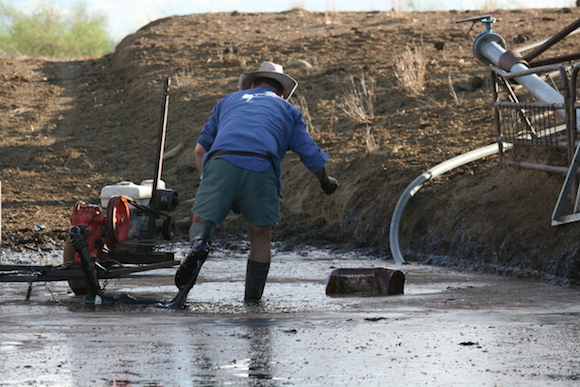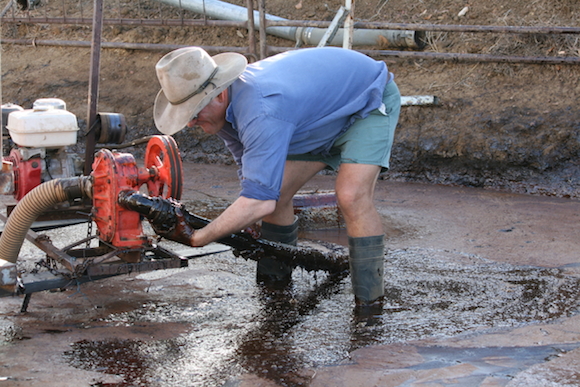Merry Christ-mess 2009
Host: Eversleigh Station
Written by Jenny Underwood – Owner, Eversleigh Station.
As a teacher my year was organized into four terms of about 10-11 weeks with school holidays in between each term. During the year there were various public holidays as a bonus.
As a grazier I basically work seven days a week, 52 weeks a year. Week-ends are no different. Of course it’s not “all work and no play”; we do take breaks and even splurge out and have a holiday from time to time – generally when we go to a Bull Sale! To be honest, our idea of a holiday is to sit at home and watch it rain, but that doesn’t happen very often lately.
On the land you quickly learn that if a job needs to be done, then regardless of what day it is, it gets done. By the same token, we are in the position that if we want to take a day or two off, we can, regardless of what day of the week it is.
The same applies to Public Holidays and week-ends. While we don’t necessarily get to take time off, we are always aware of these days as Murphy’s Law states that if a machine is going to break down or you urgently need a part, then it will happen on a Public Holiday or a week-end when you can’t ring anyone.
Although the year started off on a positive note with a good wet season, once the tap was turned off in February very little rain fell during the rest of the year. Generally around November we start to look hopefully towards the north-west for signs of storms and the arrival of the monsoon.
We rarely make plans for Christmas. We figure it’s either going to be too wet (still waiting on that dream to become a reality . . .) or too dry and we would be feeding cattle and watching out for dry storms and the threat of bushfires. The end of the year was very hot and we were feeding molasses and cottonseed to our stock as well as dry lick.
 Mid-December 2009. Roger putting molasses out in paddocks. The red tank on the back of the truck is a molasses mixer. The tank is filled with molasses and then urea, rumensin, and a protein mix are added. The mixer has paddles inside that are turned by a motor to mix all the ingredients together. Mixing usually takes about three hours to ensure that the urea is fully dissolved. Urea in concentrated amounts (i.e. poorly mixed) can be toxic to livestock.
Mid-December 2009. Roger putting molasses out in paddocks. The red tank on the back of the truck is a molasses mixer. The tank is filled with molasses and then urea, rumensin, and a protein mix are added. The mixer has paddles inside that are turned by a motor to mix all the ingredients together. Mixing usually takes about three hours to ensure that the urea is fully dissolved. Urea in concentrated amounts (i.e. poorly mixed) can be toxic to livestock.
The demand for molasses throughout Queensland was so high that stocks eventually ran out. We were very fortunate to get our two 6,000 gallon (27,000L) tanks filled at the beginning of November but once those tanks were empty and if it still hadn’t rained, it was going to be a long wait until the sugar cane crushing season started again mid-year.

Christmas Day was fairly subdued as the district was in drought. We spent a quiet day at home but didn’t realise that Murphy was subcontracting for Santa Claus and had decided to pay us a visit. The following day I went to check the time clock on the bore and noticed that the bulls in that paddock had “mud” up to their knees. Well, I thought it was mud until I detected the familiar and distinctive smell of molasses. To my horror I discovered that one of the storage tanks had burst and the bulls had been having a lovely time paddling in the huge pool of molasses.

The temperatures had been relentless all week and the ground was very hot. That pool of molasses had absorbed every bit of the heat. Roger had tried to walk through it in bare feet but it was so unbearable he had to wear gum boots. Because the bulls had been paddling in the “puddle” there was all sorts of debris and vegetation floating in the molasses which caused the pump to keep jamming.

Unfortunately the jamming pump was starting to get the upper hand in the battle to save the molasses. A lump of dirt ended up jamming the pump completely which meant that Roger had to take it up to the shed and take the whole pump apart to clear the blockage. By the time the pump was back together it was nearly dark. We went home to have a quick bite to eat but couldn’t believe it when we heard heavy rain on the roof! It was only a quick downpour of 8mm but it had made the road down to the tanks so slippery that we had to wait for it to dry out.
We gave up that night and figured that the molasses wasn’t going anywhere and we would attack it again early the following morning.
That was the plan but now we had a new problem. We had managed to get a fair amount of molasses pumped back up into the tank the previous afternoon but all of a sudden the pump couldn’t force the molasses up the polyline any more. The rain had thinned the molasses out and for some reason the pump would no longer do its job.

That was the straw that broke the camel’s back for Roger and he had to admit defeat. However we still had to empty the area of the pooled molasses so that we could continue to fill the mobile mixer for future molasses runs. Eventually Roger dug a trench with the tractor to open up the sides of the “pond” and we stood and watched in silence as 2000gal (9000L) of the “black gold” gradually streamed away across the ground towards the creek. It was heart-breaking to see all that molasses going to waste especially when we knew we couldn’t access any more.
As it turned out the gods did smile upon us a few days later when we had 50mm of rain over two days; a belated but very welcome Christmas present. However the lingering smell that remained down along the creek served as a bittersweet reminder that it was “no use crying over spilled molasses”.

